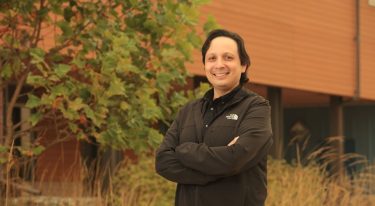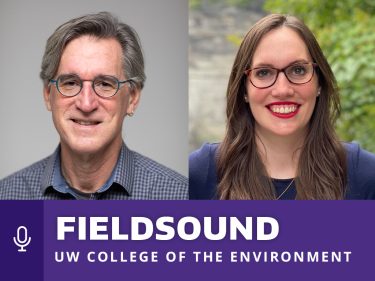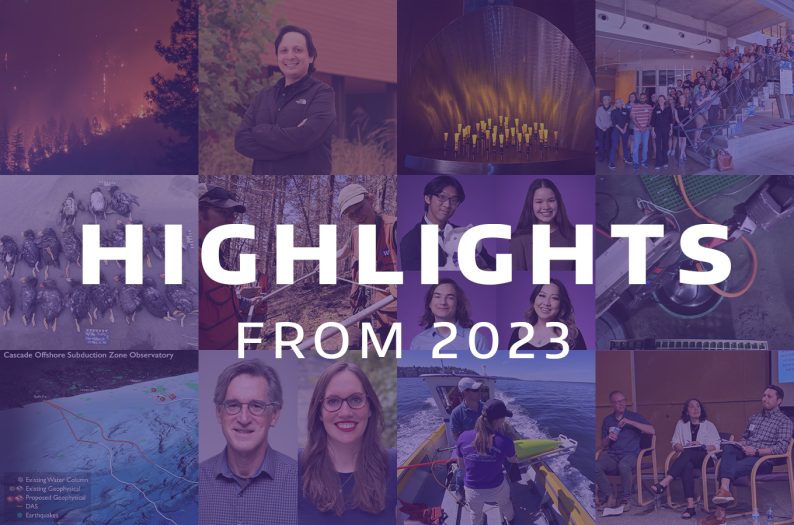
From new discoveries in our solar system to insights about how predators and prey interact with humans, 2023 was another impressive year of research in the UW College of the Environment. Our students tackled new challenges, like their first successful deployment of ocean instrumentation known as Seagliders. We celebrated anniversaries, new honors, new leadership positions and more.
With scope and depth unlike any other in the world and a broad diversity of disciplines in research and teaching, there’s no shortage of stories to tell from the College of the Environment. Our stories aim to capture the impact of our innovation and research endeavors, but also show the humanity behind this work — the people who make it happen, and the communities they work with and care about.
The stories below represent a broad swath of disciplines in the College, told in many different ways. You’ll find features, news releases, Q&As, videos and even a podcast episode. Many of these were among the most-read stories this past year, but others were chosen because we’re proud of a particular effort, or we wanted to highlight an aspect of our College that isn’t as visible. We hope you enjoy these stories.
Find all of our stories on our website and social channels: Instagram, LinkedIn, Facebook, YouTube and X (formerly Twitter). Find news releases about College research on the UW News site.
Are wildfires really getting worse? A Q&A with Brian Harvey
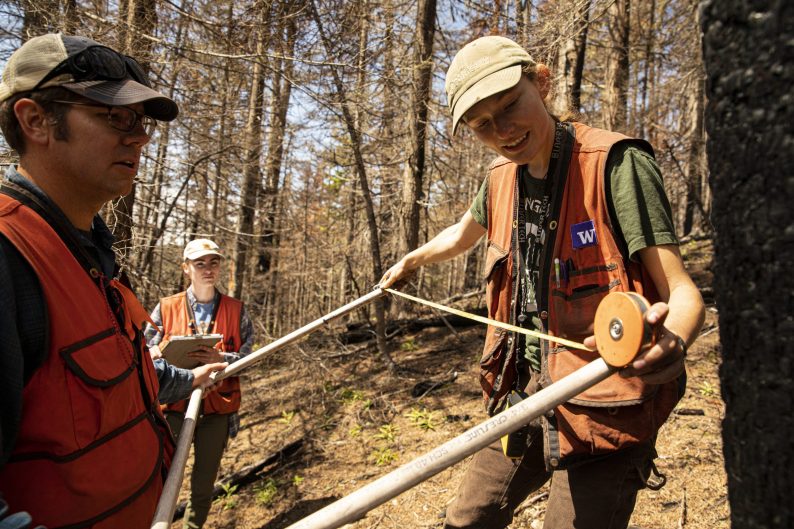
Urban and rural residents across North America are wondering: What happened to cause such a sudden change in the way our forests burn?
We sat down with Brian Harvey, assistant professor of environmental and forest sciences in the College of the Environment, to discuss some of the most common questions we encounter about the causes of wildfires, how they’re changing and what we can do to limit their impacts on human health and property. This post garnered the most page views on our website for stories published in 2023, speaking to the relevancy of this information as we face the reality of a yearly wildfire season. Read the full Q&A.
Marine heat waves caused mass seabird die-offs, beach surveys show
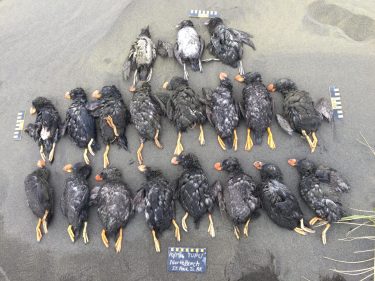
New research led by the University of Washington uses data collected by coastal residents along beaches from central California to Alaska to understand how seabirds have fared in recent decades. The paper, published July 6 in the journal Marine Ecology Progress Series, shows that persistent marine heat waves lead to massive seabird die-offs months later.
“This is truly a global data set that asked a global-sized question: Does a warming world significantly impact marine birds, among the top predators in the nearshore marine environment?” said co-author Julia Parrish, a professor of aquatic and fishery sciences in the College of the Environment and executive director of the Coastal Observation and Seabird Survey Team, known as COASST.
This research, summarized and pitched to journalists by our colleagues at UW News, was broadly covered by national and regional outlets including USA Today, The Seattle Times and Oregon Public Broadcasting. Read the full press release.
UW researchers land $10.6M to build subduction zone observatory
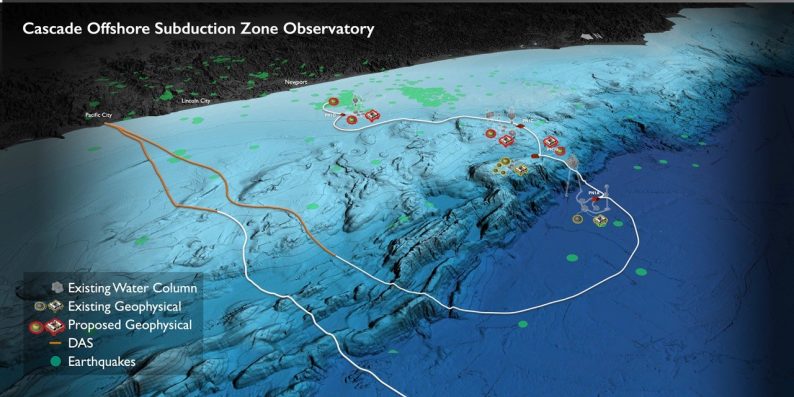
Scientists and engineers from the UW School of Oceanography, Department of Earth and Space Sciences and the Applied Physics Lab, along with partners at Scripps Institution of Oceanography, recently were awarded more than $10 million to build an underwater observatory in the Cascadia subduction zone. The funding comes from the National Science Foundation and aligns with larger efforts to better understand subduction zones more broadly.
“Because of the risks and hazards of subduction zones, the National Science Foundation and others have invested in studies to understand a wide variety of subduction zones because they all behave a bit differently and can have devastating impacts,” said oceanographer William Wilcock, one of several investigators on this project. Read the full story.
In related news, NSF announced in September that it is awarding a coalition of academic and oceanographic research organizations, including the UW, a new five-year cooperative agreement to operate and maintain the Ocean Observatories Initiative.
A Q&A with Corey Garza, UW Environment associate dean for diversity, equity and inclusion
Corey Garza began his tenure Sept. 1 as associate dean at the College of the Environment and professor of aquatic and fishery sciences. We sat down with Garza to talk about the vision for his new role at the College, his approach to advancing equity and inclusion, and what he ultimately hopes to achieve.
Garza on tackling work with a DEI lens: “You have to be comfortable with being uncomfortable. I see this a lot in DEI work, that when things become uncomfortable people want to disengage. You have to be willing to listen, and listen to actually learn. And we have to be willing to change. If you’re not, your program is not going to be effective. You have to be open to change and getting out of the ways you’ve traditionally done things, whether in science or the way that you’ve historically done DEI and outreach work.”
Read the full Q&A with Garza, and check out more about his research and work with students as a professor in SAFS.
UW earthquake experts discuss preparedness for ‘The Big One’ on final season 1 episode of FieldSound
On the final episode of the first season of FieldSound, the College of the Environment’s podcast, UW seismologists Harold Tobin and Audrey Dunham discuss the impending threat of “The Big One” — a large-scale earthquake that will strike along the Cascadia Subduction Zone.
Tobin and Dunham also share recent advances in earthquake and tsunami preparedness for communities inland and along the coast in the Pacific Northwest. This episode also highlights the work of the Pacific Northwest Seismic Network (Tobin is the director), which collects data from more than 700 seismic stations across Washington and Oregon to inform ShakeAlert, our earthquake early warning system.
Listen to the full episode, which got the most downloads for our first season of the podcast. Stay tuned for new FieldSound episodes next spring.
Video: The art and science of Prof. Dale Durran
While most of his days are spent unraveling the intricacies of weather patterns and atmospheric dynamics, Professor of Atmospheric Sciences Dale Durran has embraced metal work to express his passion for the natural world. With a curiosity that reaches far beyond the confines of the laboratory, Durran crafts works that infuse the interplay of science and creativity into each unique piece.
It’s always intriguing to learn about an academic’s side hobby or passion — sometimes completely unrelated to their lifelong professional pursuits. In the case of Durran, his artwork is not a direct interpretation of the science he’s focused on, but it is certainly influenced by his research. Read the full post.
Four students from UW Environment honored in 2023 Husky 100
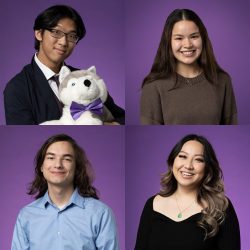
Each year, the University of Washington recognizes 100 undergraduate and graduate students from the Bothell, Seattle and Tacoma campuses, in all areas of study, who are making the most of their time at the UW.
The 2023 cohort includes four College of the Environment students: Katelyn Saechao and Gulsima Young from the Program on the Environment, and Jonathan Kwong and Maxwell Perkins from the School of Environmental and Forest Sciences.
Congratulations to our amazing students! Read more about each of them.
Spring Celebration honors 2022-23 UW Environment award winners
 The College of the Environment community gathered in late May for a spring celebration and awards ceremony for a number of honors, including distinguished staff member, exceptional mentoring of undergraduates, outstanding teaching faculty, and more.
The College of the Environment community gathered in late May for a spring celebration and awards ceremony for a number of honors, including distinguished staff member, exceptional mentoring of undergraduates, outstanding teaching faculty, and more.
This post highlights each award winner and comments about them during the selection process. Chosen through a College-wide nomination process, awardees were recognized by their colleagues for making unique, inspiring and meaningful contributions to our community during the academic year. See the entire story.
UW students get hands-on experience with Seagliders

In spring of 2023, University of Washington undergraduates loaded a curious-looking, brightly-colored machine onto a boat and headed out into Puget Sound. The machine, an autonomous underwater vehicle known as a Seaglider, was tasked with collecting a variety of important data about our oceans. This particular launch represented the first successful deployment of a Seaglider by UW students.
“It was the first time the glider was not just sitting on the table in the lab, but was going out to collect data,” said UW undergraduate Layla Airola. Airola, along with about 15 other UW undergraduate students, is a member of the Student Seaglider Center, a student-run laboratory within the School of Oceanography. This story saw a lot of interest across our social media channels, with more than 1,100 impressions across LinkedIn and Facebook, and more than 1,300 engaged users on Instagram.
Read the full story. Fun side note: This piece was written by Ellie Mason, our science communication fellow this past spring and summer. The College works with graduate students who are interested in writing about science for lay audiences as part of our fellowship program.
School of Marine and Environmental Affairs celebrates 50th
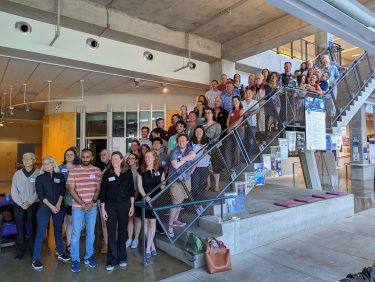 The School of Marine and Environmental Affairs turned 50 this academic year, so we asked Nives Dolšak, professor and director of SMEA, and Dave Fluharty, professor and longest serving SMEA faculty member, for their perspectives on this milestone.
The School of Marine and Environmental Affairs turned 50 this academic year, so we asked Nives Dolšak, professor and director of SMEA, and Dave Fluharty, professor and longest serving SMEA faculty member, for their perspectives on this milestone.
“This anniversary provides us with a festive opportunity to reconnect, review our work and celebrate our accomplishments while identifying the best ways to address new and emerging challenges. I hope that our anniversary brings many of our alumni, partners and friends together in an energetic and collaborative environment, which will help us chart the course for the next decade or so,” Dolšak said. Read the full Q&A.

